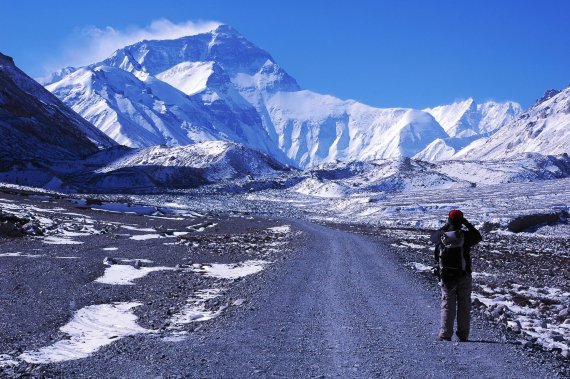
When the storm whistles over the summit of Mount Everest, it is easy to see by the white-frozen plume that blows steadily eastward here. The condensed water sprays away downwards in strong winds, warning climbers making their way up the icy slopes that bad weather is imminent. And the word "bad" often means death here.
Mount Everest is 8,848 meters high and no one is higher than it. This simple fact makes it the mountain of mountains that hundreds of climbers want to conquer every year. Trained climbers, but also older gentlemen, children and even children make their way to the death zone. Unfortunately, not always successfully.
Did you know that the water on Mount Everest starts to boil at around 70 degrees? And that even in the best of conditions, a person cannot survive up here for more than one or two days at the most? Or that in summer the average temperature on the summit is 19 degrees, below zero of course. Or that the rock juts out into the jet stream, causing the wind to accelerate to 250 km/h?
Mount Everest has hundreds of stories to tell. The most exciting are connected with mountaineering, because for the summit triumph the colossus takes its toll. Even before New Zealander Edmund Hillary became the first person to set foot on the summit in 1953, at least 21 people paid for the attempt with their lives. Today, those who set out for the summit - well prepared and with a group of Sherpas - have a less than 1 in 4 chance of actually reaching the top. Most of them return empty-handed, about 50,000 US dollars poorer, but still with their skin intact. Many are determined to try again.

In the years since 1953, about 20 routes to Mount Everest have been tried, but most of them are very rarely used. The two main routes are the North and South routes, with the longer North route starting in China and the South route starting in Nepal. It is the longer distance that makes the climb from China less predictable. This is because the more time that passes during the climb, the greater the risk of being caught out by bad weather. In addition, the time spent in the so-called death zone above 7,000 meters (some consider 7,500 or 8,000 meters to be the limit) is longer, which increases the risk of suffering from altitude sickness.
The base camp of the most frequented southern route is at an altitude of 5,400 meters. The route then immediately climbs steeply, first through an icefall, where there is a route secured with ropes to minimize the risk of ice movement. The route continues through an approximately three-kilometre-long mountain basin, a so-called cirque, then across a glacier that rises at an angle of approximately 60 degrees. At an altitude of 8,000 metres, the South Col is reached, where the summit ridge of Everest begins. Over the ridge, the route leads to the south summit, which, however, is not yet finished. Between this point and the summit of Mount Everest, which is about 100 meters higher, the "Hillary Step" is waiting - a 12 meter high rock, which can only be climbed. For some Everest tourists, the end of the adventure journey is reached here, so close to the goal.
The history of the Everest climb goes back long before 1953. In the 1920s, the British climber George Mallory made several attempts to reach the summit. To this day, it remains unclear whether this may have been achieved in the early summer of 1924, as Mallory and his compatriot Andrew Irvine did not return from their tour.
The fact that Edmund Hillary and the Sherpas Tenzing Norgay and Ang Nyima finally earned the fame of the first climbers in 1953 is also due to the failure of an oxygen system. In fact, another rope team from the same expedition - with Britons Tom Bourdillon and Charles Evans - was supposed to be the first to reach the summit. However, they were thwarted by their icy oxygen equipment and had to turn back.
This could not have happened to Italian Reinhold Messner and Austrian Peter Habeler in 1978. Both reached the summit on May 8, the first time without the use of supplemental oxygen.

 OutDoor by ISPOOutDoor in transition
OutDoor by ISPOOutDoor in transition
- Awards
- Mountain sports
- Bike
- Fitness
- Health
- ISPO Munich
- Running
- Brands
- Sustainability
- Olympia
- OutDoor
- Promotion
- Sports Business
- Textrends
- Triathlon
- Water sports
- Winter sports
- eSports
- SportsTech
- OutDoor by ISPO
- Heroes
- Transformation
- Sport Fashion
- Urban Culture
- Challenges of a CEO
- Trade fairs
- Sports
- Find the Balance
- Product reviews
- Newsletter Exclusive Area
- Magazine




